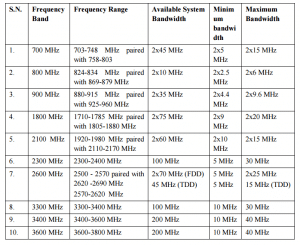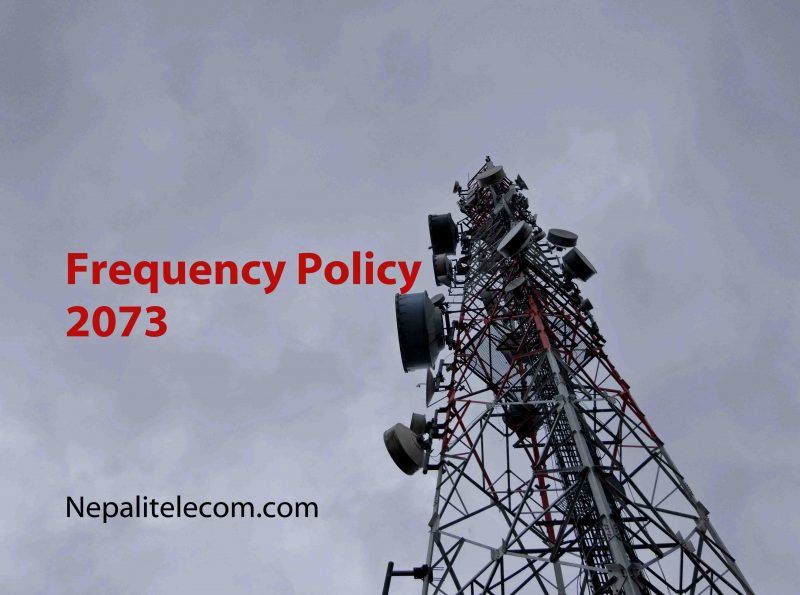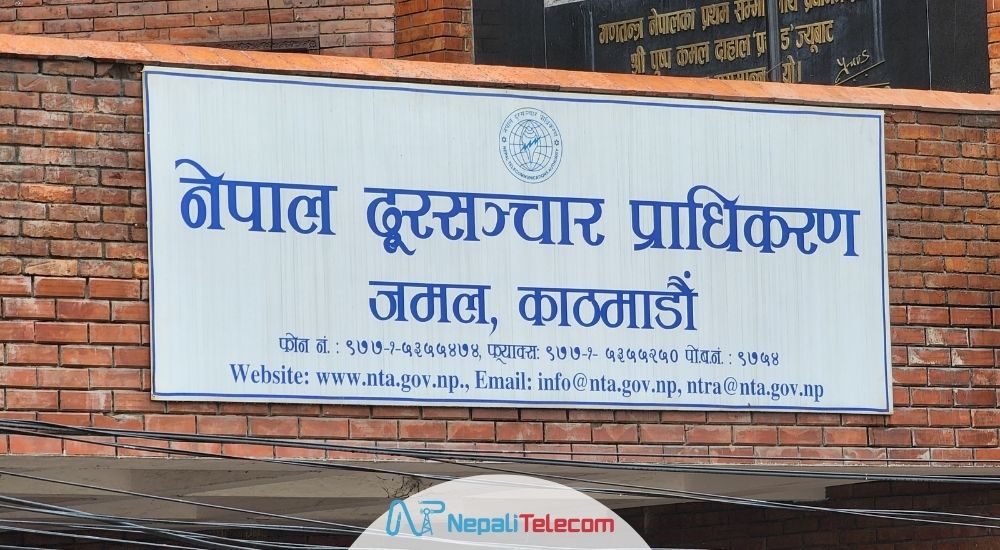Government has made a first edit on the spectrum policy ( distribution and price) 2069. Before the draft was submitted by NTA (Nepal Telecommunication Authority) to the Ministry of Information & communication (MOIC), it was under reviewed by a technical committee there and made discussions with various stakeholders (including telcos). The amended draft from the NTA is now known to be approved by Radio frequency determination committee, headed by Minister for Information and Communication, Mr. Sherdhan Rai. After the approval, the new spectrum policy is called Telecommunication service based Radio Frequency ( Distribution and price) policy (first edit) 2073 in English ( in Nepal its Doorsanchar seba ko Radio Frequency ( Badfad ra mulya sambandi) niti (Pahilo Samsodhan) 2073. The objective of the policy is
- to create level playing fields among telcos.
- to implement technology neutrality in Nepal.
- to bring more spectrum efficient technology like 4G in Nepal.
- to promote telcos maximize the usage of limited radio frequency.
- to implement auction in new frequency bands and maximize the revenue from spectrum to government.
- to fix total bandwidth in new and existing frequency bands and assign minimum spectrum and Maximum bandwidth (with or without merger).
In the new frequency policy, Government has decided to let the operators to implement any technology (services) in existing frequency bands. This is called technology neutrality (To know more about it, read here). Two major operators Ncell and NT have been demanding the same to pave the way for implementing 4G service in their existing frequency and network. The decision of technology neutrality is only applicable for the telcos with GSM or basic telephony license. The regulator will ask the operators (getting approval for technology neutrality) to submit their work plan within some time and conditions. The operators can only implement technology neutrality (with 4G in existing bands, 3G in other bands) after the completion of their work plan, preparations and getting approval from NTA.
The new policy has even introduced the merger and acquisition among telcos for which market suitable merger and acquisition legal framework will be developed later. The maximum bandwidth after merger and acquisition will be decided after the development of the legal framework.
Read more about all radio frequency bands for telecommunication, here
The frequency bands for spectrum neutrality with frequency range, total bandwidth, minimum bandwidth and maximum bandwidth for an operators has been fixed as:

The cost for usage of frequency has also been fixed for technology neutrality, where the price for 2100 MHz band is taken as a reference. The comes to Rs 1.2 crore per 1 MHz (unpaired), i.e. Rs 24 crore for 1X10 MHz (single carrier, 5 MHz duplex). 700 MHz FDD and 2600 MHz (FDD and TDD) will be auctioned later and the license for this band will be open to all including ISPs . There is also provision for TVWS (TV white space) band for rural broadband for which frequency and price will be developed later. The license and frequency distribution will also be separated and it will be separated for the existing voice service provider after 25 years of operation.
The policy has even fixed the installment payment per year in 1o years time for the hefty license renewal fee of 20 billion rupees.
To read the spectrum policy 2073 in detail, please download it here.
Frequency policy 2073 Nepal NTA 2016












